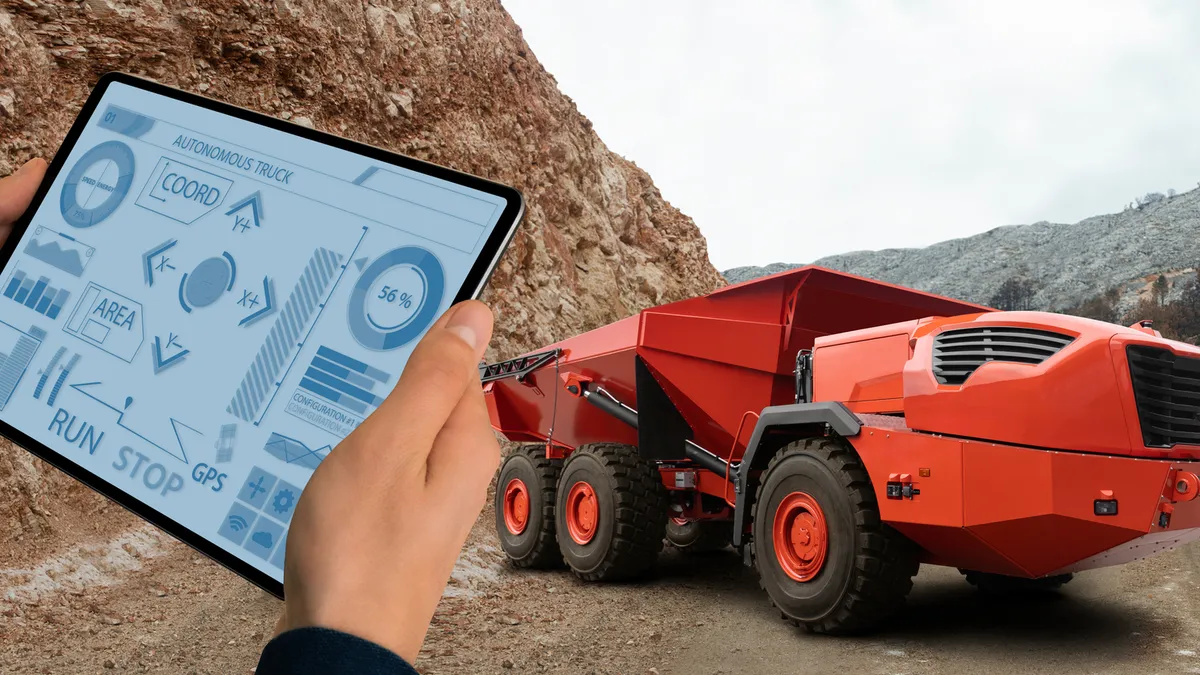When it comes to hesitations about autonomous technology investments among industrial technology organizations, it’s easy to assume that cost is the biggest concern.
But a survey of 160+ construction, agriculture and mining leaders reveals that cost is far from the top hurdle. In fact, it’s last on the list. Instead, they worry most about internal expertise and labor.
According to them, there are three hesitations that prevent major investments in autonomous work—at least for now.
1. We don’t have internal tech expertise
Before it’s deployed, it’s not unusual for new technology to cause concern. Many leaders often fear that changing processes, systems or workflows will be complicated and require several internal resources to manage.
In the construction, agriculture and mining industries, 41% of leaders say that lack of internal expertise prevents them from investing in autonomy because their team won’t know how to deploy or manage it.
The good news is that you don’t need internal tech experts to roll out or benefit from autonomous work. Proper system design and training provided by an expert can alleviate many of these obstacles.
“Within these industries, autonomy is still in an early phase,” says Kevin Andrews, strategic marketing manager, autonomy, at Trimble. “As a result, there are many unknowns, which can make it daunting to figure out what you need and properly define requirements.”
He uses an automated perception system as an example. How will you look through your field to detect obstacles? Do you want to use cameras? Do you want to use LiDAR or radar? How will you manage different weather conditions?
“To be able to ask the right questions and select the right system takes some experience,” he explains. “That’s where a good partner comes in. They should know the bumps in the road you’ll come across—and how to get over them. They’ve learned the hard way for you.”
The right partner can act as an extension of your in-house team to address technology and knowledge gaps while you focus on your job.
2. The technology still requires too much human intervention
For 39% of industrial technology leaders, the main concern is the amount of time their team will spend learning new skills and managing autonomous equipment—and the fear that productivity improvements won’t be steep enough to earn that time back.
“If you have standardized products and processes in place for your autonomous platforms when it comes to selecting products that will talk to each other, that will help,” Andrews describes. “Your workers will spend less time fiddling with things, and data will more easily transfer to new systems so they can operate efficiently.”
Different levels of autonomy also help you define the level of attention that will be required from workers:
- Fully autonomous work implies full workflow automation with no human supervision
- Supervised autonomy involves a high level of automation with minimal operator supervision
- Partial autonomy refers to task automation with operator assistance
In other words, you get to decide how involved—or not—your workers will be in autonomous technology.
When done right, autonomous technology puts time back on the clock for workers instead of taking up more hours of their day. This is why 56% of respondents say they invest in autonomous technology: to overcome labor shortages. It makes existing employees more productive.
The survey also revealed that nearly 50% of respondents plan to strive for fully autonomous workflows to eliminate the need for workers to manage autonomous tech in the future.
3. We struggle with trusting the technology
With new technology often comes a lack of trust when it’s first deployed. It took years for people to establish confidence in the internet. When automobiles were first available, many consumers were leery of transportation that didn’t involve horses. Today, 31% of survey respondents say they currently struggle to trust autonomous technology.
“The construction, agriculture and mining industries are understandably risk averse,” says Andrews. “It’s incumbent on technology providers to earn their trust by deploying this technology thoughtfully and deliberately, doing it right and paying attention to safety standards.”
Talk to potential autonomy partners to find out how they develop, test and validate their autonomous technology. It’s also important to make sure they can provide the level of support your organization will need.
Deploying autonomous work in phases can also help people see the technology in action to help build trust.
Explore other autonomous technology insights
Trimble and Industry Dive surveyed 160+ C-suite executives, directors, managers and supervisors in construction, agriculture and mining. Find out how you compare to these leaders, who gave us an inside look at where and how they’re using autonomy now, along with their plans for the future.
Download Investments in Autonomous Technology Are on the Rise — Even in an Uncertain Economy to access the complete set of exclusive data and expert insights.










